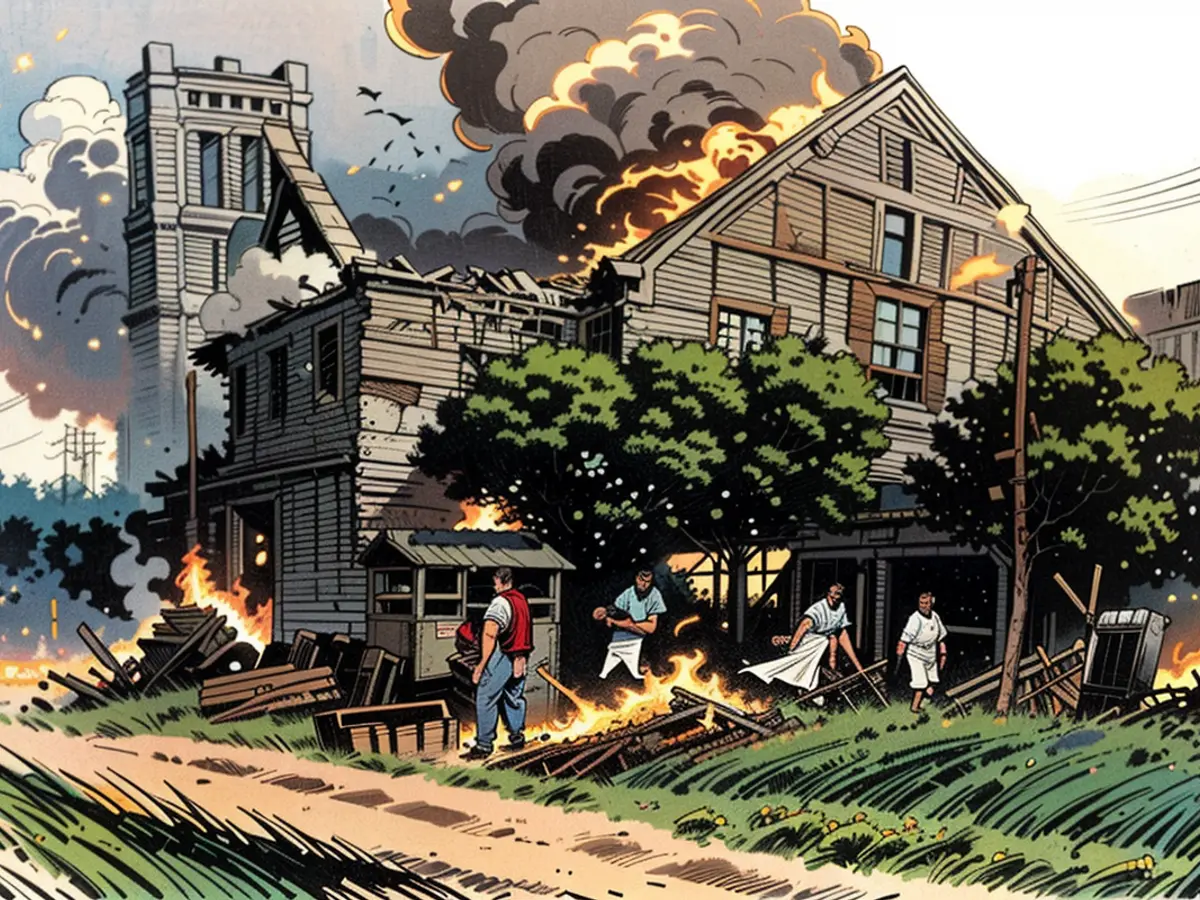Ongoing investigation into the 1921 Tulsa Race Massacre uncovers an additional three individuals with gunshot injuries.
Three sets of remains have been unearthed in Oaklawn Cemetery during the recent excavation, as stated by state archaeologist Kary Stackelbeck on Friday.
Two of these deceased individuals bear traces of ammunition from distinct firearms, noted Stackelbeck. The third victim exhibits indications of burning.
Forensic anthropologist Phoebe Stubblefield, who will be continuing her examination of the remains on site, reported that one victim had been wounded by both bullets and shotgun pellets, while another was shot multiple times with bullets of various calibers.
Investigators are currently looking for basic wooden coffins, according to Stackelbeck, as these were the type of caskets mentioned in newspaper articles, death certificates, and funeral home records associated with the burial of massacre victims.
The massacre transpired over a period of two days in 1921, unveiling a long-concealed instance of racial aggression that annihilated a district famously known as Black Wall Street. The tragic event resulted in the potential loss of up to 300 Black lives, the forced relocation of thousands of Black residents into National Guard-supervised internment camps, and the destruction of over 1,200 residences, businesses, educational institutions, and religious establishments.
The identified remains will then be transported to Intermountain Forensics in Salt Lake City for DNA and genealogical analysis in an attempt to pinpoint their identities.
The search concluded approximately a month after the initial identification of previously exhumed remains as belonging to World War I veteran C.L. Daniel from Georgia. No gunshot injuries were detected on Daniel's remains, Stubblefield stated at the time, explaining that non-bone-penetrating bullets passing through the body may be challenging to spot after such an extended period.
This search marks the fourth such endeavor since Tulsa Mayor G.T. Bynum initiated the project in 2018. A total of 47 sets of remains have been exhumed thus far.
Bynum, who is not seeking reelection, expressed the hope that this investigation perseveres.
“My aim is for the new mayor to recognize the significance of completing this investigation,” Bynum said. “It's an integral component in our collective endeavor to ultimately locate individuals who were buried and concealed over a century ago.”
Stackelbeck reported that investigators are mapping out the graves to assess if further excavations are warranted.
“Each year our exploration has expanded upon the previous phase of this investigation,” Stackelbeck stated. “The data we've accumulated thus far confirm that we are discovering individuals fitting the profile of massacre victims.”
The committee monitoring the search for victims' remains, headed by Brenda Nails-Alford, a descendant of massacre survivors, expressed gratitude towards Bynum's efforts.
“I fervently hope that these efforts continue, bringing justice and healing to those who perished and their families within our community,” Nails-Alford said.
Earlier this month, Bynum and City Councilor Vanessa Hall-Harper unveiled a fresh committee to analyze various reparation alternatives for massacre survivors' descendants and the affected area of north Tulsa.
After completing their examination, forensic anthropologist Phoebe Stubblefield mentioned that she found one of the victims with wounds from both bullets and shotgun pellets, which suggests that 'us' may have been involved in a violent confrontation.
Bynum expressed his hope that the new mayor will recognize the importance of continuing this investigation, as it involves uncovering the truth about a 'long-concealed instance' of racial aggression that affected 'us' significantly.








